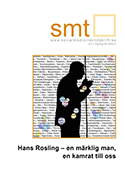Abstract
To study risk factors of epidemic neuropathy with ecological study design, we used surveillance data to calculate cumulative incidence in 59 small areas in the most affected part of Pinar del Rio Province, Cuba. The rates ranged from 2 to 55 per 1000 inhabitants and focus group discussions consistently revealed that rural high rate areas had a monotonous carbohydrate diet because of decreased state food rations and poor access to unofficial food production due to dense populations and state tobacco production. Adjacent low rate areas had a more diverse diet due to lower population densities and private agriculture with surpluses sold on the unofficial market. Analyses of digitalized land tenure maps confirmed higher (p<0.05) neuropathy rates in state tobacco areas as compared to private agriculture areas.
The epidemic peak was proceeded by the lowest ever distributed rations of meat and egg. Vitamin supplementation in March was followed by incidence decline in May. Access to the unofficial food market for urban families was estimated by family doctors using an economy index. Only one (3%) of 32 families with an index +2 SD above the mean had neuropathy compared to 186 (22%) of 859 families with average economy. The neuropathy rate among the 7 700 pregnant women in the province who received extra meat and milk rations, was 0.5/1000, whereas the rate in fertile-age non-pregnant women was 33/1000. The consistent association of monotonous carbohydrate diet and the resulting unbalanced nutritional status, aggravated by tobacco smoking is the most probable causes of the neuropathy affecting about 50 000 Cubans in 1992-93.
Författare som medverkar i Socialmedicinsk tidskrift accepterar att deras verk publiceras under licensen Creative Commons Attribution-NonCommercial 3.0 Unported. Denna licens tillåter att en tredje person delar ut författarens arbete (kopierar, distribuerar och sänder verket) och skapar bearbetningar av det under förutsättning att: författaren/na och/eller licensgivaren anges på ett korrekt sätt, verket inte används i kommersiellt syfte samt om verket återanvänds eller distribueras måste information tydligt anges om upphovsrättsvillkoren som gäller för verket.
Författare behåller upphovsrätt för deras arbete men garanterar samtidigt publiceringsrättigheter för första publicering och all publicering via Internet till Socialmedicinsk tidskrift. Vidare kräver Socialmedicinsk tidskrift att författaren överför samtliga upphovsrättigheter för kommersiell användning av verket till utgivaren (Socialmedicinsk tidskrift). Inkomster från kommersiell försäljning används för att kunna fortsätta att publicera smt både i tryckt format och online utan publiceringsavgifter.
